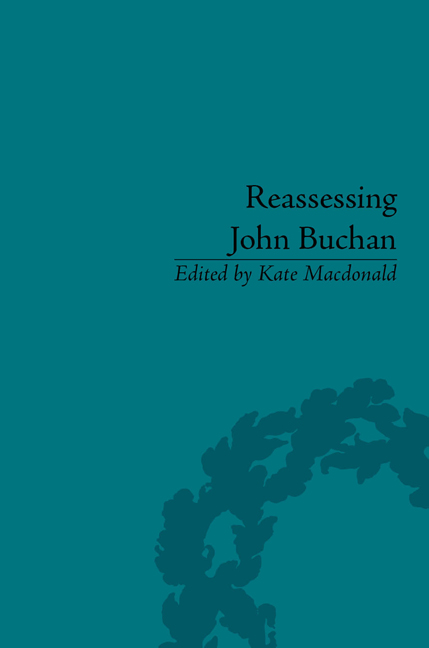Book contents
- Frontmatter
- CONTENTS
- List of contributors
- Introduction
- I Cultural Roots
- II Divided Loyalties
- III Literary Art
- 12 ‘A Fraud Called John Buchan’: Buchan, Joseph Conrad and Literary Theft
- 13 Aphrodite rejected: Archetypal Women in Buchan's Fiction
- 14 John Buchan: Politics, Language and Suspense
- 15 Buchan's Supernatural Fiction
- 16 The Anarchist's Garden: Politics and Ecology in John Buchan's Wastelands
- 17 Tracing The Thirty-Nine Steps
- Notes
- Works Cited
- Index
16 - The Anarchist's Garden: Politics and Ecology in John Buchan's Wastelands
from III - Literary Art
- Frontmatter
- CONTENTS
- List of contributors
- Introduction
- I Cultural Roots
- II Divided Loyalties
- III Literary Art
- 12 ‘A Fraud Called John Buchan’: Buchan, Joseph Conrad and Literary Theft
- 13 Aphrodite rejected: Archetypal Women in Buchan's Fiction
- 14 John Buchan: Politics, Language and Suspense
- 15 Buchan's Supernatural Fiction
- 16 The Anarchist's Garden: Politics and Ecology in John Buchan's Wastelands
- 17 Tracing The Thirty-Nine Steps
- Notes
- Works Cited
- Index
Summary
Two years after T. S. Eliot had opened The Waste Land (1922) with the mordant judgement that ‘April is the cruellest month’, John Buchan's novel of struggle against anarchist conspiracy, The Three Hostages, began with a more upbeat reflection on the seasons:
It was still mid-March, one of those spring days when the noon is like May … The season was absurdly early, for the blackthorn was in flower and the hedge roots were full of primroses … [I]n the bracken in Stern Wood I thought I saw a woodcock, and hoped that the birds might nest with us this year, as they used to long ago. It was jolly to see the world coming to life again, and to remember that this patch of England was my own, and all these wild things, so to speak, members of my little household.
Spring at Hannay's Oxfordshire home, Fosse Manor, bought, like Buchan's own Oxfordshire manor, ‘just after the war’, contrasts sharply with the bleak ecology of Eliot's poem. Organic growth in The Waste Land is paradoxically a sign of death as much as the embodiment of life, imaging a post-war world simultaneously sterile and corrupt. Voices in the opening section ask ominously: ‘What are the roots that clutch, what branches grow / Out of this stony rubbish’ ‘That corpse you planted last year in your garden, / Has it begun to sprout? Will it bloom this year?’. Hannay's ‘patch of England’, on the other hand, figures an optimistic renewal that reads as an antidote to this, and to the chaos of 1914–18, a theme repeated by Buchan in his 1940 autobiography Memory Hold-the-Door:
The war left me with an intense craving for a country life. It was partly that I wanted quiet after turmoil … But it was also a new-found delight in the rhythm of nature, and in small homely things after so many alien immensities.
- Type
- Chapter
- Information
- Reassessing John BuchanBeyond the Thirty Nine Steps, pp. 193 - 206Publisher: Pickering & ChattoFirst published in: 2014



